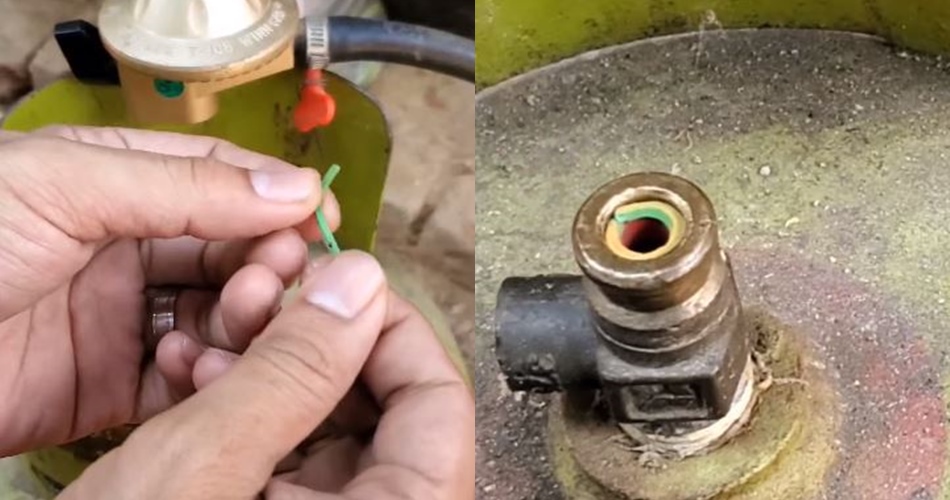YouTube/Family Hent
Brilio.net - Cooking with a gas stove will run smoothly if there is still enough LPG gas in the cylinder. If it runs out, the gas cylinder must automatically be replaced with a new one. However, many people are reluctant to replace gas cylinders themselves because they are considered dangerous and at risk of exploding.
The process of attaching a stove regulator to an LPG gas cylinder is not always successful in one try. The reason is, sometimes even though the regulator has been installed tightly, the gas cylinder may still leak. Signs that a gas cylinder is leaking can be seen from a hissing sound or the smell of sulfur coming from the tube.
There are many tricks to overcome this, such as wrapping sewing thread around the rubber seal or lip of the gas cylinder, sticking pieces of old sandals into the hole in the tube, and so on. However, netizens on the Family Hent YouTube account have another trick that is no less simple. He shared his experience regarding tricks for dealing with leaking gas cylinders in one of his posts.
"Gas like this is definitely difficult to install, it will definitely leak, you can hear (the hissing sound of gas coming out)," he said, quoted by BrilioFood from YouTube Family Hent on Sunday (24/3).
The trick to dealing with leaking gas cylinders is just to use 1 simple tool.
According to the owner of the YouTube account Family Hent, the gas cylinder can leak because the position of the rubber seal in the gas cylinder hole is still quite low, so there is a gap for the gas to escape when the regulator is installed. So, so that there are no more gaps, you can rely on pieces of rubber bands.
Yup, this rubber band is the main tool for practicing this trick to deal with leaking gas cylinders. Just use a small piece of rubber band, make sure the rubber can fit and coil properly in the gas cylinder. Position the piece of rubber band directly above the gas cylinder's rubber seal.

photo: YouTube/Family Hent
After that, immediately attach the regulator to the LPG gas cylinder. Close the regulator lock until the position is steady and tight. After installation, pay close attention to whether there is still a sulfur smell or a hissing sound coming from the gas cylinder. If it is safe, the gas stove is ready to be used again for cooking.

photo: YouTube/Family Hent
Wow, it's really a simple trick to deal with leaking gas cylinders, isn't it? Taking a peek at the comments column of the Family Hent YouTube upload which has been watched 504 thousand times, quite a few netizens have been really helped by this tutorial, you know.
"Alhamdulillah, very useful. I was confused about how many times I put smells & sounds, found this tutor, it worked," wrote YouTube @srial.
"Thank God, I succeeded in using this method...
"I'm getting dizzy. The smell of gas keeps leaking," said YouTube @slotnewbie-fw5nq.
How to store a stock of rubber bands so they don't melt easily.
Rubber bands melting and sticking together usually occur due to excessive heat exposure. Here are some ways to solve this problem.
1. Avoid direct heat exposure.
Make sure the rubber band is not exposed directly to a heat source such as direct sunlight, a hot pan, or a hot surface. Place the rubber band in a cool place protected from excessive heat.
2. Use proper storage.
Store rubber bands in a cool, dry place. Avoid storing in hot, humid places or exposed to direct sunlight.
3. Use talcum powder or powder.
Covering the rubber bands with baby powder or talcum powder can help reduce the chance of the rubber bands sticking to each other. Talcum powder helps keep the rubber band dry and protected from moisture.
4. Use ziplock bags.
If you store large quantities of rubber bands, separate each bracelet and place each in a ziplock plastic bag. This will prevent the rubber bands from sticking to each other and make it easier to use them later.
5. Use the right packaging.
Make sure the rubber bands are stored in a suitable container or packaging, such as an airtight box or plastic container, to protect them from exposure to heat and moisture.
6. Don't store too tightly.
Avoid storing rubber bands too tightly in one container or storage area. Leave a little space for air to flow between each bracelet, which can help prevent the rubber bands from sticking to each other.
(brl/lut)